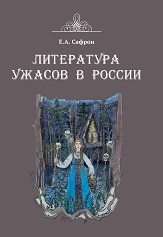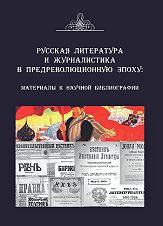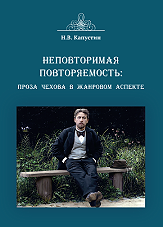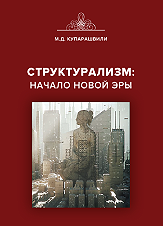Alexeeva Marina G.,
Candidate of Philology,
Associate Professor of the Foreign Languages Department
Chuvash State University
https://orcid.org/0000-0002-2626-1087
e-mail: margennal@yandex.ru
Frolova Vera A.,
Candidate of Philology,
Associate Professor of the Foreign Languages Department
Chuvash State University
https://orcid.org/0000-0002-8097-0060
e-mail: frvera@yandex.ru
This article is devoted to identifying the features of translation of impersonation as a means of expressing imagery. The establishment of the adequacy of the translation of personifications into different structural languages determines the relevance of the study. Personification is understood in the work, first of all, as a way of forming a pragmatic or emotional meaning, the transmission of which is one of the main tasks in translating a poetic text. The translations of the poem Narspi by the universally recognized Chuvash classic Konstantin Ivanov into Russian, German and French were subject to a comprehensive analysis. The comparative method used in the work allows us to reveal the internal mechanism of transmission of metaphorical meanings by means of other languages, to identify the equivalence of translation of units that convey the peculiarities of national and author's poetic thinking, the originality of the picture of the Chuvash cultural world. It is established that in the original text of the poem, natural phenomena and landscapes are most often personified as an integral part of nature: the seasons (images of winter and spring), heavenly bodies (sun), forest and trees, which, in tune with the emotional state of the main characters, convey the entire palette of emotional experiences. Less often in the poetic text there are personifications of abstract concepts and everyday objects. The focus of the research is on the peculiarities of using translation techniques to adequately convey the pragmatic meaning expressed by personifications. The method of substitution with the character of generalization is considered in detail, contextually antonymous and synonymous cases of substitution, as a special case is the replacement of one part of speech with another and collateral transformations. It is emphasized that the translation of personifications into different structural languages fully preserves the idea of the author of the original poetic text, conveys the feelings and worldview of the characters, recreates the national and cultural picture of the Chuvash ethnos.
Keywords: personification, translation of a poetic text, Chuvash, Russian, German, French
References
1. Slovar’ literaturovedcheskikh terminov. URL: https://rus-literary-criticism.slovaronline.com/224-olitsetvorenie (08.01.2025).
2. Rozental D.E., Telenkova M.A. Slovar’ lingvisticheskikh terminov. URL: https://gufo.me/dict/linguistics_rosenthal/olitsetvorenie (17.01.2025).
3. Rizel E.G., Shendels E.I. Stilistika nemetskogo iazyka: uchebnik dlia institutov i fakul’tetov inostrannykh iazykov. Moscow: Vysshaia shkola, 1975. 316 s.
4. Ivanov K.V. Sochineniia: na chuvashskom i russkom iazykakh. Cheboksary: Chuvashskoe knizhnoe izd-vo, 1990. 256 s.
5. Ivanov K.V. Narspi / per. s chuvashskogo iazyka B.S. Irinina; pod red. A.A. Sokolovoi. Cheboksary: Chuvashskoe knizhnoe izd-vo, 1985. 128 s.
6. Iwanow K.W. Narspi. Das Tschäwasch Poem. Übersetzung ins Deutsche von Prof. Dr. W. Iwanow / red. Prof. Dr. Dieter Cherubim, Prof. Dr. Eberhard Winkler. Göttingen, 2008. 73 s.
7. Ivanov K.V. Narspi: conte poétique tchouvache. Paris: Éditionis du Cygne, 2021. 85 p.
8. Medvedev V.V. “Narspi” K.V. Ivanova: traditsii chuvashei na stranitsakh poemy // Problemy istorii, filologii, kul’tury. 2017. No. 1 (55). S. 294–303.
9. Isaev Iu.N., Emelianova M.V., Kuznetsova T.N. Opisanie obychaev chuvashskogo naroda na nemetskom iazyke (na primere poemy K.V. Ivanova “Narspi”) // Vestnik Chuvashskogo un-a. 2018. No. 4. S. 244–249.
10. Salmina O.O., Stepanova O.Iu. Poema K.V. Ivanova “Narspi” v perevode na russkii iazyk P.P. Khuzangaia // Natsional’nye iazyki i literatury v usloviiakh bi- i polilingvizma. Cheboksary: ChGPU, 2019. S. 245–249.
11. Duman G.B. Nebesnye tela v poeme K.V. Ivanova “Narspi” i osobennost’ ikh v chuvashskom fol’klore // Iazykovye kontakty narodov Povolzh’ia i Urala: problemy regional’nogo literaturovedeniia i fol’kloristiki. Cheboksary: ChGU, 2018. S. 38–53.
12. Kuznetsova T.N. Sravnenie v chuvashskom iazyke: osobennosti perevoda na russkii i nemetskii iazyki (na primere poemy K.V. Ivanova “Narspi”) // Vestnik SAFU. Seriia: Gumanitarnye i sotsial’nye nauki. 2024. T. 24. No. 1. S. 77–84.
13. Aleksandrov S.A. Postanovka problemy: sistemnye tainy “Narspi” // Konstantin Ivanov i chuvashskii mir (v kontekste natsional’nykh kul’tur). Cheboksary: ChGIGN, 2015. S. 40–58.
14. Sdobnikov V.V., Petrova O.V. Teoriia perevoda: uchebnik dlia studentov lingvisticheskikh vuzov i fakul’tetov inostrannykh iazykov. N. Novgorod: NGLU, 2001, 306 s.
15. Barkhudarov L.S. Iazyk i perevod. Voprosy obshchei i chastnoi teorii perevoda. Moscow: Mezhdunarodnye otnosheniia. 1975. 240 s.
16. Lotman Iu.M. Lektsii po struktural’noi poetike // Iu.M. Lotman i tartusko-moskovskaia semioticheskaia shkola. Moscow: Gnozis, 1994. 560 s.
17. Slovar’ literaturovedcheskikh terminov. URL: https://rus-literary-criticism.slovaronline.com/343-sillabicheskoe%20sti... (07.01.2025).
18. Mezhkul’turnaia kommunikatsiia: Praktikum. Ch. I / sost. A.E. Bochkarev, V.G. Zusman, Z.I. Kirnoze. N. Novgorod: NGLU im. N.A. Dobroliubova, 2002. 230 s.





.png)







